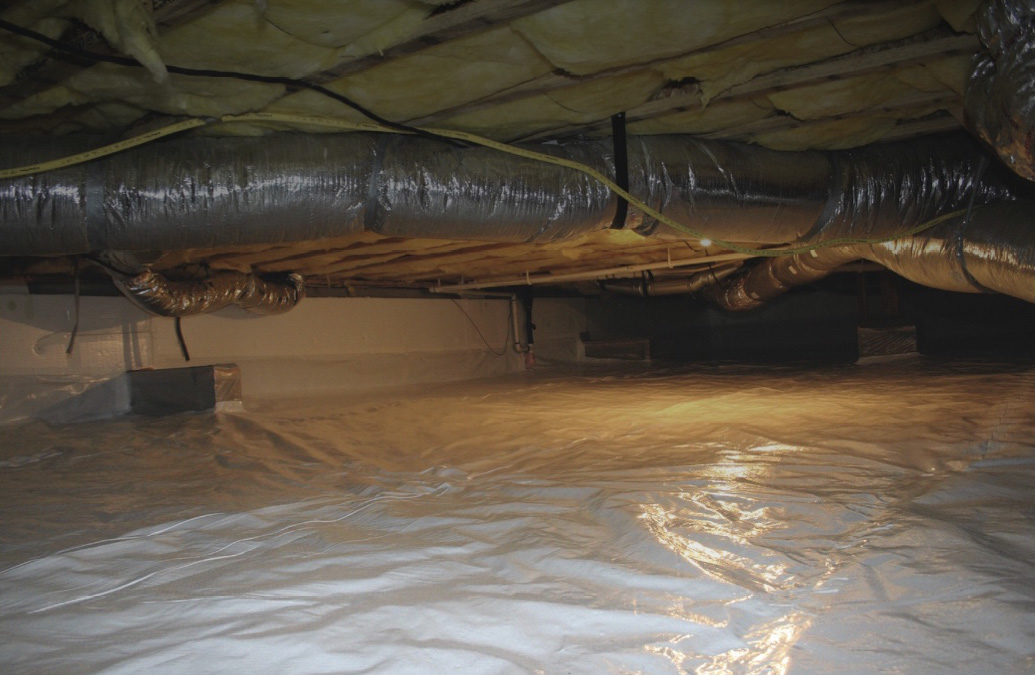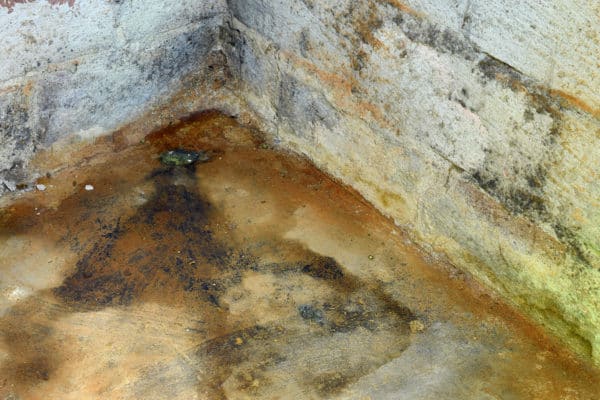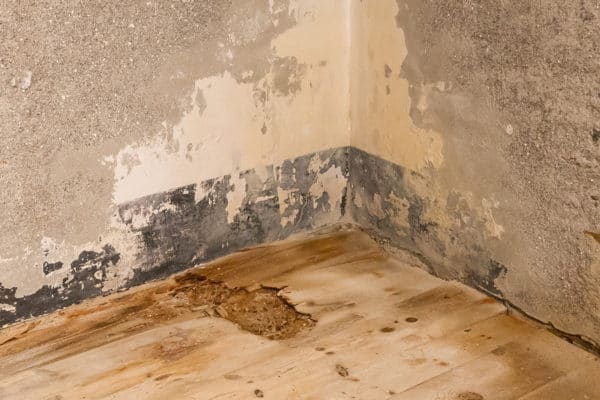READY TO GET STARTED?
REQUEST A FREE ESTIMATE
Fill out the form below or call (888) 466-7849 for a free, no-obligation estimate.

There are over 27 million homes in the United States with crawlspaces. These crawlspaces are typically used for storage and easy access to plumbing but can also harbor water and mold. They are dirty, damp places that provide an ideal environment for mold, mildew, pests, and rust. Keeping your crawlspace dry is essential to improving the overall health of your home. Here are the essentials to crawlspace moisture barriers.
A crawlspace is a variation of a basement where you can crawl around. The surface of a crawlspace is often just bare earth. They are traditionally built for homes without a basement or for homes that aren’t built on a slab. The primary purpose of crawlspaces was to promote air circulation throughout the home and to allow easy access to plumbing, electrical, and other home maintenance needs. The crawlspace can also be used for extra storage.
Crawlspace moisture usually comes from one of three sources:
Controlling the moisture levels in your crawlspace provides you with several benefits, helping to improve both your health and the health of your home. The benefits include:
Crawlspace moisture should be kept at an appropriate level to help prevent adverse effects on your home and your health. The Environmental Protection Agency (EPA) recommends keeping the relative humidity in your home between 30% and 50%.
A crawlspace vapor barrier is a set of polyethylene sheets that are placed on the uncovered soil of your crawlspace to prevent moisture from seeping through. This helps improve the relative humidity levels in the crawlspace. Vapor barriers, also known as moisture barriers, are often used in conjunction with dehumidifiers and/or crawlspace encapsulation.
Do you still have questions about crawlspace moisture barriers? Do you have an issue with moisture in your crawlspace? Contact a professional who can come out and inspect your crawlspace, identify potential areas of concern, and recommend the best treatment plan for your situation.

Should you enclose your crawlspace this winter? The resounding answer is yes. There are several benefits to crawlspace enclosure, especially when cold weather sets in and energy costs soar. Most crawlspaces house pipes, ducts, and other appliances. Continuous exposure to cold air and freezing temperatures can lead to frozen and busted pipes and potential water damage. While it is important to keep your crawlspace clean and dry year-round, it is especially important in the winter as it can easily become damp and humid. The excessive moisture and extreme temperatures can also cause significant damage to your home.
While closing your crawlspace vents can help, it is often not enough to keep moisture, insects, and other pests out of your crawlspace. The moisture found in crawlspaces attracts pests like termites, roaches, and millipedes and the crawlspace provides the ideal entry point to your home. The increased humidity also provides the ideal environment for mold and wood rot which can lead to serious health issues for your family and trigger allergies and asthma.
Cold air from your crawlspace can also seep through into your home, keeping your floors cold and causing your heating system to work overtime, greatly increasing your energy costs.
So what can you do this winter to keep the cold and the pests out of your crawlspace? Here are 4 steps to protecting your crawlspace this winter.
Your gutters can’t drain properly when they are clogged with leaves and debris. These clogs cause overflows with the water collecting at the base of the house. This overflow then seeps into the ground and evaporates into your crawlspace. Standing water from clogged gutters also attracts pests like mosquitoes and roaches to your home. Make sure runoff is directed away from the base of your home. If possible, extend your gutters to drain at least 10 feet away from your crawlspace. Make sure your gutters stay clean and free of debris. Consider installing gutter guards to help prevent clogs.
Although air vents allow air to circulate through your crawlspace, they also provide an entryway for water and moisture. In the winter, close all the air vents to your crawlspace before the temperatures get too cold. Have them sealed properly to prevent rainwater and moisture from getting inside. This also helps ensure your crawlspace stays warm in the winter and cool in the summer.
Your crawlspace walls, corners, and even base can have tiny holes that allow air leaks into the area. Professionally sealing your crawlspace can help prevent air from circulating through these cracks which, in turn, helps reduce humidity and keeps the warm air in.
Most crawlspaces have no covering or protection on their floors. A substantial amount of water evaporates from the ground and increases the humidity in the crawlspace. The professional installation of a vapor barrier can help prevent this evaporation and keep water and moisture out.
Whatever the season, crawlspace enclosure is a beneficial addition to your home. It not only helps increase the air quality of your home by preventing mold and wood rot, it also provides a natural pest control barrier. It also helps keep the cold air out, which means your heating unit doesn’t have to work as hard, increasing its efficiency and decreasing your energy costs.
How To Deal With Moles This Winter
Keeping Pests Away From Your Holiday Treats
How To Save Money on Your Energy Bills

It’s October! Time for all things pumpkin, fall decorations, and staying in to enjoy your home. A potential drawback: the South, unfortunately, does not have instant cooler weather. With temperatures teetering between 85 and 90 degrees, your home might be battling moisture issues and pest invasions in your crawlspace throughout the month. Let’s look at what problems could arise and how investing in crawlspace solutions could help!
Excessive moisture and warm weather work together to create the perfect environment for pests. In addition, your home’s crawlspace is the ideal entry point for pests to enter and invade your home. (Think termites, cockroaches, ants, earwigs, and millipedes)
Along with pests, the high humidity also contributes to conditions suitable for mold growth and wood rot. This can cause severe health issues for members of your home that suffer from asthma and allergies.
Investing in the sealing of your home’s crawlspace won’t just help with cutting down on moisture issues; it can also improve the air quality of your home for you and your family. Acting as a natural pest control barrier, you can get back to enjoying those fall nights indoors and not worrying about what could be taking over your crawlspace.
Interested in crawlspace solutions for your home? Call your local crawlspace care provider to schedule an inspection for your home.